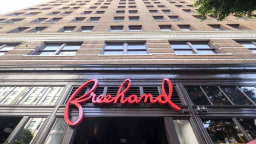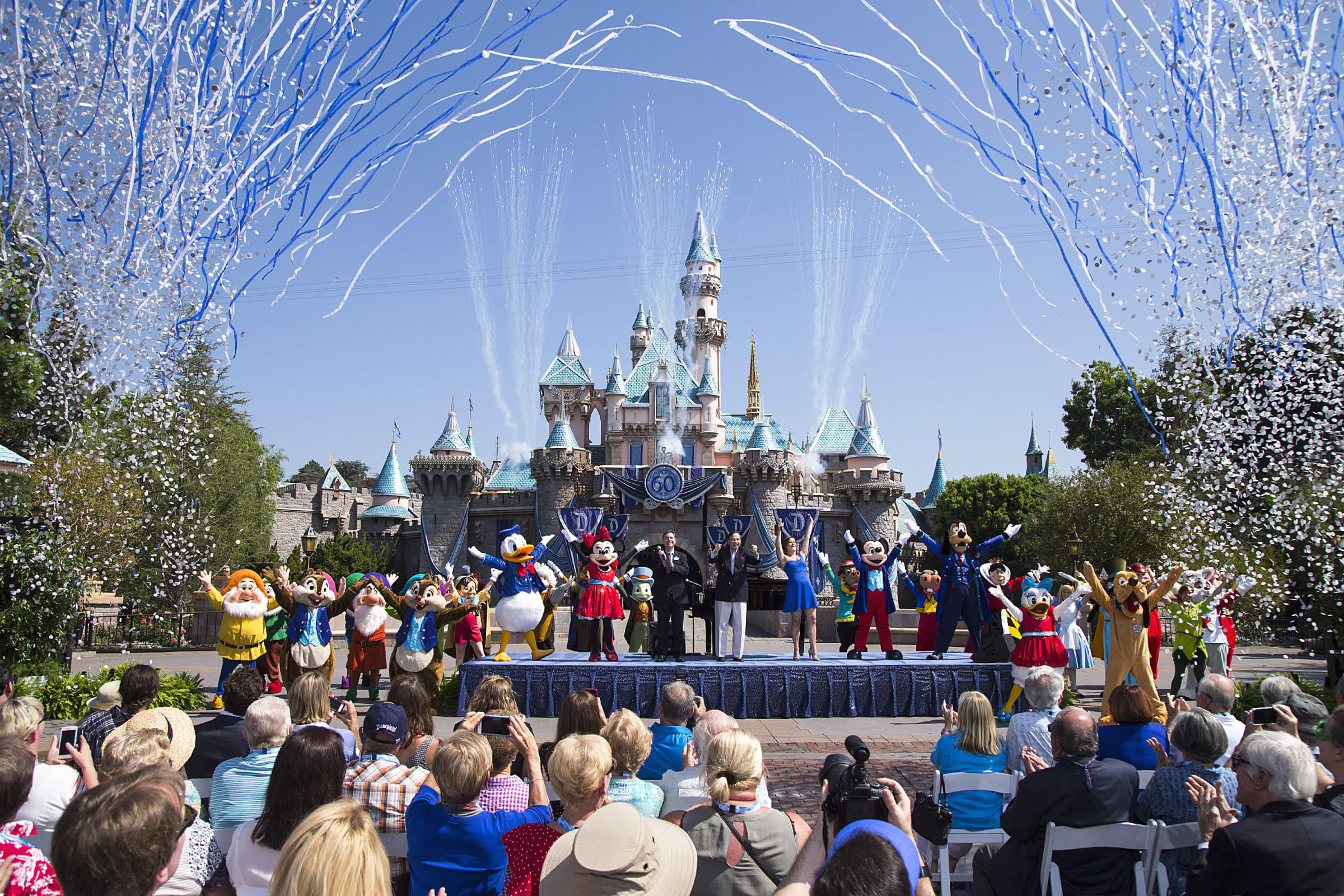Disney Sued by Labor Union for Failing to Pay Living Wage: Employees Have to ‘Live in Their Cars’
MOUSE HOUSE 
Photo Illustration by The Daily Beast/Getty/George Rose
“A lot of [workers] have to live in their cars, on people’s couches, because they can’t afford the rent on that wage in the City of Anaheim.”
Tarpley Hitt Reporter
Published Dec. 11, 2019
There’s an old Walt Disney quote, a favorite of workplace morale posters and business self-help books, that goes: “You can design and create, and build the most wonderful place in the world. But it takes people to make the dream a reality.” These days, there are a lot of people making the Disney dream a reality—a study of the Disneyland Resorts last year found that 27.2 million people visited the California theme park in 2016 alone, thanks to the 30,000 workers who keep the place up and running.
But a new class action lawsuit, filed Friday in California Superior Court and announced in a press advisory Monday, argues that the Walt Disney Company, worth approximately $130 billion as of this year, failed to pay hundreds of those workers a living wage. The complaint was filed by five Disney employees on behalf of more than 400 hospitality workers, accusing the Walt Disney Company and several affiliates (Walt Disney Parks and Resorts U.S. Inc., Sodexo Inc., SodexoMagic, LLC, and 100 unnamed Does) of “unlawful conduct and unfair business practices.” The plaintiffs are asking for back wages, restitution, and damages, which their attorney, Randy Renick, said may be significant. “With the back pay,” Renick said, “we’re talking millions of dollars.”
“A lot of [workers] have to live in their cars, or on people’s couches, because they can’t afford the rent on that wage in the City of Anaheim,” said Kathleen Grace, a plaintiff in the case and a Starbucks barista employed by Sodexo, which Disney contracts to operate its backstage food and beverage services. “It’s really sad to see. A lot of times, they’re choosing to feed their families or put gas in their car to come to work.”
The L.A. Hotel Where Workers Wade Through Literal Sh*t
LABOR PRACTICES
Tarpley Hitt

Why Martin Scorsese’s War on Marvel Actually Matters
TRUTH TO POWER
Cassie Da Costa

The case concerns an initiative called Measure L, which Anaheim voters passed in November of 2018. The ballot measure requires resort employers that received tax rebates from the city to pay their employees a $15 living wage. The new wage was supposed to go into effect Jan. 1, 2019, and increase by one dollar each year until Jan. 1, 2022. By 2023, the code states, the wage increases would change to reflect rising costs of living. The ballot measure was backed by the Coalition of Resort Labor Unions, a group of 11 local unions representing 17,000 workers, or more than half of Disney employees. In a press advisory Monday, the CRLU came out in support of the workers’ class-action case.
The complaint argues that Disney and its contractors took “massive” subsidies from the City of Anaheim, but did not alter their wages or overtime pay to reflect the new law. Grace, who came out of retirement in August of 2016 to work for Sodexo, said she makes $14.25 an hour. Many of her co-workers, including food servers, banquet servers, bellhops, and doormen at the three Disney hotels, earn as little as $12 an hour. Other plaintiffs in the case include Thomas Bray, a bell person at the Disneyland Hotel, who earns $12.25 an hour; Regina Delgado, a cashier at the Plaza Inn restaurant inside the Disneyland theme park who made $12 an hour until October; Alicia Grijalva, a make-up stylist at the park who earned $12 an hour until July; and Javier Terrazas, a banquet event server who makes $12 an hour.
“We shouldn’t have to struggle living paycheck to paycheck,” Grace said. “We all are trying to pay our rent, feed our families, get gas to drive here and there. We shouldn’t have to make the choice between putting gas in our car to get to work and feeding our family.”
We shouldn’t have to struggle living paycheck to paycheck. We all are trying to pay our rent, feed our families, get gas to drive here and there. We shouldn’t have to make the choice between putting gas in our car to get to work and feeding our family.
When Measure L was first drafted, Disneyland Resort fell squarely among the employers it would affect. At the time, Disney had two deals with the City of Anaheim which would have qualified them for the living wage law: a $267 million tax rebate to build an additional luxury hotel; and a 30-year entertainment tax break in exchange for investing $1 billion into their existing resorts. Just one month before the measure passed, however, Disney terminated both agreements, leaving their status under Measure L uncertain. At the time, the Los Angeles Times noted that the last-minute pull-out effectively ensured the billion-dollar corporation would not have to pay workers a living wage.
But those weren’t the only deals Disney has made involving public money. A Los Angeles Times investigation from 2017 found that the company had secured rebates and other incentives from the city worth more than $1 billion (Disney disputed the estimate). In the lawsuit, the workers specifically point to a subsidy from 1996, when Disney received over $500 million in tax rebates from Anaheim to help build California Adventure, the second Disney-owned theme park after the original Disneyland. The bulk of that money came in the form of municipal bonds, borrowed from the Anaheim Finance Authority, which were used to construct a $108 million parking facility. Since its construction, Disney has kept all the revenue from the garage, which low estimates put at around $35 million annually, but leases the garage from the city for just one dollar a year. “Disney got a rebate of the best kind,” the complaint states. “It got its taxes back before it paid them.”

Disneyland park in Anaheim, California
Paul Hiffmeyer/Getty
Still, the case hinges on the definition of “rebate.” In a report from October 2018, the Anaheim City Attorney argued that “rebate”—though not defined in Measure L or set at a fixed legal definition—meant “discount.” Under that definition, he wrote, the 1996 transaction did not qualify, rendering Disneyland exempt from paying a living wage. Disneyland spokesperson Liz Jaeger echoed the findings in a statement: “The union coalition is well aware that the City Attorney has previously looked at this issue,” Jaeger wrote, “and clearly stated that Measure L does not apply to the Disneyland Resort."
The theme park also alleged that all non-tipped workers already earn a minimum of $15 an hour and can get overtime pay. Grace and Renick disputed that claim, pointing out that two of the plaintiffs made just $12 an hour, and that many workers who make less than $15 an hour do not receive tips. “We are not tipped employees,” Grace said. “Sodexo doesn’t allow tips. I was told that was a Disney policy, but I’m not clear. We do not receive tips.”
“It’s important to know that the law doesn’t distinguish [between tipped or non-tipped employees],” Renick said. “You have to pay the minimum wage, or in this case the living wage, to all employees—whether tipped or not. California Constitution actually requires that… There are quite a number of folks in the class who are not tipped employees who are making less than $15 an hour.”
The 2018 survey of Disneyland Resort workers, or “cast members” as they’re called, found that 73 percent of employees “do not earn enough money to cover basic expenses every month.” Conducted by the Occidental College Urban & Environmental Policy Institute and underwritten by the CRLU, the report surveyed more than 5,000 Disney Resort employees. More than half reported concerns of being evicted from their homes or apartments; two-thirds said they were food insecure; and 11 percent said they had been homeless in the past two years. In the latter category, 13 percent were living with young children.
No comments:
Post a Comment